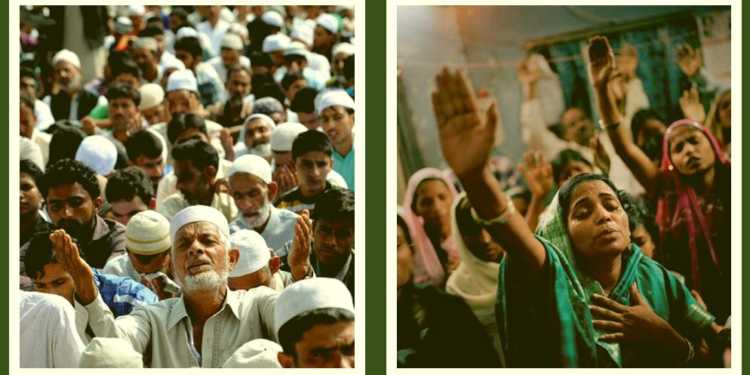In a country as diverse as India, the term ‘minority’ holds a special meaning. The Jarawa Adivasis of Andamans, numbering a couple of hundreds are a minority when compared to other cultures. Similarly, the Muslims, numbering some 172 million are a minority when compared to the dominant Hindus. Telugu speakers numbering 79 million constitute a minority when compared to Hindi speakers. Brahmins in Uttar Pradesh make up for 10% of its population and are therefore a minority in their own right. Income Tax payers make up 1.5% of India’s population and may well be counted as a minority.
In short, there exist a minority of one, minority of hundreds, of thousands and of several millions in India. The constitution, while dedicating reams of pages to uplift of minorities, does not define who or what a minority is.
In the context of Hindu-Muslim strife that plagued the subcontinent, minorities were traditionally understood to be religious in nature. However, with the creation of states on linguistic basis and the protests that preceded it, language also became a determinant of ‘minority’ status. Here, we will focus only on the religious minorities.
The National Commission of minorities Act passed in 1992, defined Muslims, Christians, Sikhs, Buddhists, Zoroastrians (Parsis) as minorities in the country. Jains were added to this list in 2014. Thus, nearly 20% of the population of India, amounting to some 250 million souls were categorized as minorities. This, obviously is the situation on a pan-India level. In Punjab, Sikhs constitute 58% of the population and Hindus make up another 38%. Clearly, the definition of minority that works at a national level, does not work at a state level. The situation is markedly different in several North-Eastern states and Jammu & Kashmir, where Hindus constitute anywhere between 10-25% of the population. Another level of complexity is added by the differences that exist within different religious communities. So, for instance, 25-30% of Muslims in India follow the Shia creed, making them a substantial sub-religious minority. Similarly, the Syriac Christian communities form a miniscule minority within the larger Christian minority. Thus, there are substantial complexities in identifying minorities in the country, aggravated by the studied silence maintained by the constitution on this issue.
Fortunately, Courts have come to the rescue in some of these cases. In the TMA Pai Foundation & ors vs State of Karnataka & ors case, the Supreme Court held that ‘a minority either linguistic or religious is determinable only by reference to demography of the State and not by taking into consideration the population of the country as a whole’. In a similar case in ’71, the Supreme Court held that even though Hindus were a majority in India, they could be treated as a minority in a state like Punjab. In the Kerala Education Bill case (1957), the Court held that since the bill pertained to Kerala, the religious demographics of Kerala must be considered to decide the meaning of minority.
That having been said, the question of minority in India continues to be complex and cumbersome. It is laughable that Muslims who make up nearly 180 million souls are counted as minorities even though their population in India is greater than the population of Islamic countries such as Iran and Saudi Arabia, combined. And it is nothing short of tragedy if the 65000 Hindus in Lakshadweep do not enjoy minority rights. The pertinent question that still haunts us is that who exactly constitutes minorities. If the state endeavours to protect and safeguard the rights of minorities from being overwhelmed by the majority, then religion cannot be the overlying criteria. Because it is not the Muslims who need protection as such, but the Shias, the Sufis and the Ahmediyyas who need safeguarding from the numerically stronger Sunnis. Similarly, it is the St. Thomas Christians, the Samvedis and others who need state support from the numerous Roman Catholics and Protestants. Within the Hindus, it is the Santhal religion in East India, the Sanamahism of Manipur that needs safeguarding from the more numerous Hindus. And what about the new-age minorities? – The atheists, The LGBTs, devil worshippers and so on
The debate for defining minorities in India will be an endless one. In a country, some of whose districts are larger than sovereign countries, should ‘State’ be the deciding factor for ascertaining minorities is itself debatable. However, small steps are beginning to be made in the right direction. Supreme Court has asked the Centre to comment on who constitutes minorities in J&K. This in itself may encourage a healthy debate and a fresh approach towards identifying minorities in the country.


































